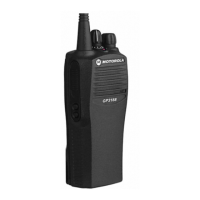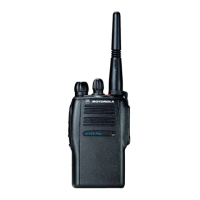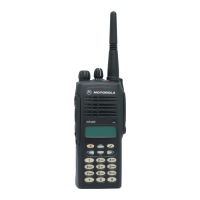Chapter 2
THEORY OF OPERATION
This Chapter provides a detailed theory of operation for the UHF2 circuits in the radio. For details of
the theory of operation and trouble shooting for the the associated Controller circuits refer to the
Controller Section of this manual.
Refer to Figure 2-1 and the UHF Transmitter schematic diagram
)
The UHF2 transmitter consists of the following basic circuits:
Antenna switch/harmonic Þlter.
Antenna matching network.
Power Control Integrated Circuit (PCIC).
UHF2 Transmitter Block Diagram.
The power ampliÞer (PA) consists of two principle devices:
LDMOS PA driver IC, U101.
LDMOS PA Þnal stage, Q110.
The LDMOS driver IC provides 2-stage ampliÞcation using a supply voltage of 7.3V. The ampliÞer is
capable of supplying an output power of 0.3W (pins 6 and 7) with an input signal of 2mW at 3dBm
(pin16). The current drain is typically 160mA while operating in the frequency range of 450-527MHz.
PCIC
PA
Antenna Switch/
Stage
Harmonic Filter
Vcontrol
Vcontrol
From
Antenna
Matching
Network
Power
Amplifier
VCO
PA Final
Driver

